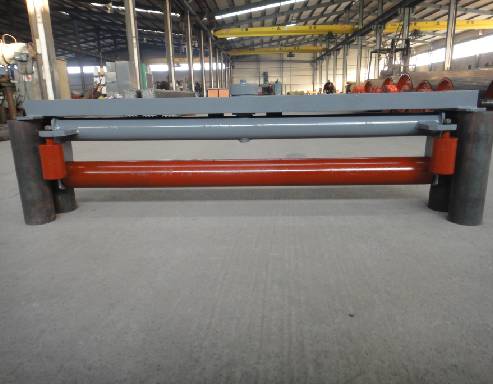 Afrikaans
Afrikaans  Albanian
Albanian  Amharic
Amharic  Arabic
Arabic  Armenian
Armenian  Azerbaijani
Azerbaijani  Basque
Basque  Belarusian
Belarusian  Bengali
Bengali  Bosnian
Bosnian  Bulgarian
Bulgarian  Catalan
Catalan  Cebuano
Cebuano  Corsican
Corsican  Croatian
Croatian  Czech
Czech  Danish
Danish  Dutch
Dutch  English
English  Esperanto
Esperanto  Estonian
Estonian  Finnish
Finnish  French
French  Frisian
Frisian  Galician
Galician  Georgian
Georgian  German
German  Greek
Greek  Gujarati
Gujarati  Haitian Creole
Haitian Creole  hausa
hausa  hawaiian
hawaiian  Hebrew
Hebrew  Hindi
Hindi  Miao
Miao  Hungarian
Hungarian  Icelandic
Icelandic  igbo
igbo  Indonesian
Indonesian  irish
irish  Italian
Italian  Japanese
Japanese  Javanese
Javanese  Kannada
Kannada  kazakh
kazakh  Khmer
Khmer  Rwandese
Rwandese  Korean
Korean  Kurdish
Kurdish  Kyrgyz
Kyrgyz  Lao
Lao  Latin
Latin  Latvian
Latvian  Lithuanian
Lithuanian  Luxembourgish
Luxembourgish  Macedonian
Macedonian  Malgashi
Malgashi  Malay
Malay  Malayalam
Malayalam  Maltese
Maltese  Maori
Maori  Marathi
Marathi  Mongolian
Mongolian  Myanmar
Myanmar  Nepali
Nepali  Norwegian
Norwegian  Norwegian
Norwegian  Occitan
Occitan  Pashto
Pashto  Persian
Persian  Polish
Polish  Portuguese
Portuguese  Punjabi
Punjabi  Romanian
Romanian  Russian
Russian  Samoan
Samoan  Scottish Gaelic
Scottish Gaelic  Serbian
Serbian  Sesotho
Sesotho  Shona
Shona  Sindhi
Sindhi  Sinhala
Sinhala  Slovak
Slovak  Slovenian
Slovenian  Somali
Somali  Spanish
Spanish  Sundanese
Sundanese  Swahili
Swahili  Swedish
Swedish  Tagalog
Tagalog  Tajik
Tajik  Tamil
Tamil  Tatar
Tatar  Telugu
Telugu  Thai
Thai  Turkish
Turkish  Turkmen
Turkmen  Ukrainian
Ukrainian  Urdu
Urdu  Uighur
Uighur  Uzbek
Uzbek  Vietnamese
Vietnamese  Welsh
Welsh  Bantu
Bantu  Yiddish
Yiddish  Yoruba
Yoruba  Zulu
Zulu Innovative Approaches to Designing Conveyor Belt Idlers for Enhanced Performance and Durability
Conveyor Belt Idler Design Enhancing Efficiency and Durability
Conveyor systems are fundamental to various industries, facilitating the seamless movement of materials across vast distances. A critical component of these systems is the conveyor belt idler, which plays an essential role in supporting the belt and ensuring smooth operation. The design of conveyor belt idlers is a significant factor that can enhance the efficiency, reliability, and longevity of a conveyor system.
Understanding Conveyor Belt Idlers
Conveyor belt idlers are rollers that are strategically placed along the conveyor path to support the belt as it moves. They are crucial for maintaining tension in the belt, guiding it, and minimizing wear. Idlers are generally classified into several categories based on their function and position, including carrying idlers, return idlers, and impact idlers. The design of idlers can significantly influence the performance of the conveyor system.
Key Design Considerations
1. Material Selection The material used for idlers must be durable enough to withstand the operating conditions. Common materials include steel and plastic, each offering unique benefits. Steel idlers are known for their strength and ability to handle heavy loads, while plastic idlers are lighter and resistant to corrosion, making them suitable for environments with moisture.
2. Roller Diameter and Thickness The diameter and thickness of the rollers are critical in determining the load-bearing capacity and stability of the idlers. Larger diameter rollers create a wider contact area with the belt, reducing wear and tear. The thickness of the roller shell also affects its durability; thus, it should be optimized based on the application.
conveyor belt idler design

3. Bearing Design The bearing system within idlers impacts their efficiency and lifespan. High-quality bearings can reduce friction and wear, enhancing the overall performance of the conveyor system. It is essential to select bearings that can handle the expected loads and environmental conditions, including temperature fluctuations and exposure to dust and moisture.
4. Alignment and Spacing Proper alignment and spacing of idlers are vital for the smooth operation of the conveyor belt. Misaligned idlers can lead to excessive wear, belt tracking issues, and increased energy consumption. Design considerations should include adjustable supports to allow for precise alignment during installation and maintenance.
5. Maintenance Accessibility A well-designed idler should allow for easy maintenance and replacement. Regular inspection and maintenance are crucial for preventing breakdowns and extending the lifespan of the conveyor system. Design features such as quick-release mechanisms or modular components can facilitate maintenance.
Innovations in Idler Design
Recent advancements in technology have introduced innovative design techniques and materials for conveyor belt idlers. For instance, the use of composite materials has gained popularity, as they offer a lightweight alternative to traditional steel while providing excellent strength and corrosion resistance. Additionally, computer-aided design (CAD) software allows for precise simulations and adjustments, optimizing idler performance before physical production.
Conclusion
In conclusion, the design of conveyor belt idlers is a critical aspect of maximizing the efficiency and longevity of a conveyor system. By focusing on key factors such as material selection, roller specifications, bearing systems, alignment, and maintenance accessibility, engineers can create idlers that significantly enhance operational performance. With ongoing innovations in materials and design technologies, the future of conveyor belt idler design promises even greater efficiency and reliability, contributing to the overall effectiveness of conveyor systems in various industrial applications. Investing in quality idler design not only reduces maintenance costs but also ensures that conveyor systems operate smoothly and efficiently, meeting the demands of modern industries.
-
Revolutionizing Conveyor Reliability with Advanced Rubber Lagging PulleysNewsJul.22,2025
-
Powering Precision and Durability with Expert Manufacturers of Conveyor ComponentsNewsJul.22,2025
-
Optimizing Conveyor Systems with Advanced Conveyor AccessoriesNewsJul.22,2025
-
Maximize Conveyor Efficiency with Quality Conveyor Idler PulleysNewsJul.22,2025
-
Future-Proof Your Conveyor System with High-Performance Polyurethane RollerNewsJul.22,2025
-
Driving Efficiency Forward with Quality Idlers and RollersNewsJul.22,2025





























